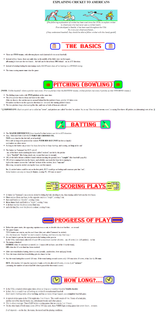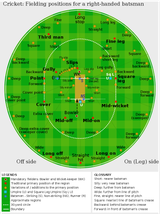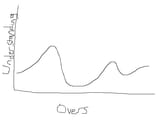>>150129648
First off I want to say that pic
>>150109918 was dogshit yank crap because it refers to bowlers as "pitchers" which is something nobody, literally no one, does. Besides teams play with multiple bowlers not just two, theoretically any player on a side can bowl an over. But to answer you questions:
>1
You can see the wickets in the OP at either end of the pitch, a chain (22 yards) apart. They consist of three stumps with two "bails" on top.
>2
I'm not sure what it means by that, if you're out you are out.
>3
In a full game of cricket the match starts at 11 o'clock then breaks at 1 o'clock for "Lunch" and then at 3:40 for "tea" which is a 20 minute break, and then the final session is played (there's supposed to be a minimum number of overs bowled a day.
Most games you would see at club level however are limited overs and they'll have a break when the first innings is over before the second is played.
>4
Yes its tactical. A bowler and the bowling side are looking to make the batsman play shots into the areas he wants him to play, to either restrict his scoring and with the hopes of getting him out; and so the batsman will have to look to score runs in gaps in the field and also try and force the bowler into changing his bowling so he can score where he wants.
Most obvious example of this if you watch some cricket is that seam bowlers (fasts and swing) will bowl outside the off-stump (or around "top of off") into an area called "the corridor of uncertainty" due to the batsman having to determine whether to leave or play a shot, and if he does play getting him to edge the ball to the wicket-keeper or a slip, or get out LBW.
The tactical play differs, quite significantly in some cases, between the three formats of the game.
 8/5/2025, 8:56:57 PM
No.150108756
[Report]
>>150108808
>>150109888
>>150109918
>>150110274
>>150110290
>>150110332
>>150110884
>>150111340
>>150113428
>>150119394
>>150120443
>>150131287
>>150131421
>>150131438
>>150137795
8/5/2025, 8:56:57 PM
No.150108756
[Report]
>>150108808
>>150109888
>>150109918
>>150110274
>>150110290
>>150110332
>>150110884
>>150111340
>>150113428
>>150119394
>>150120443
>>150131287
>>150131421
>>150131438
>>150137795






















